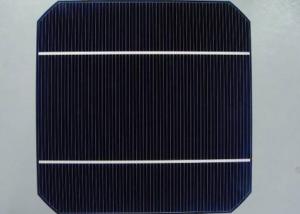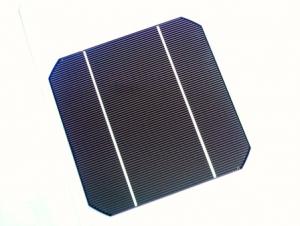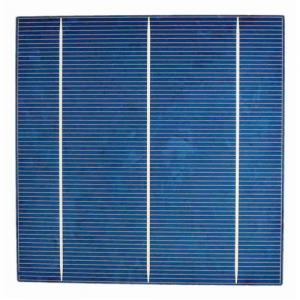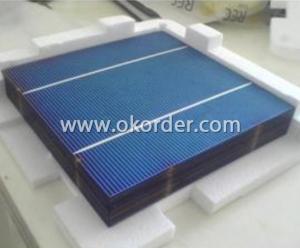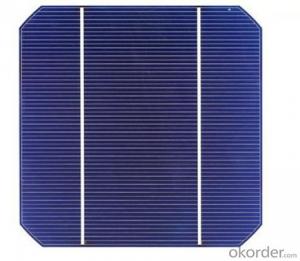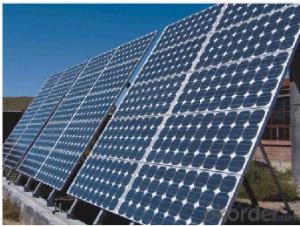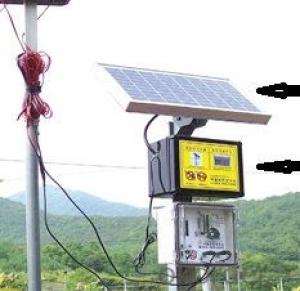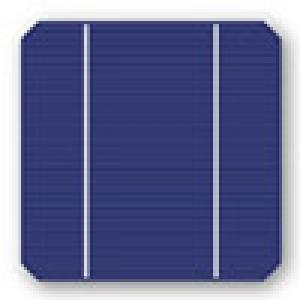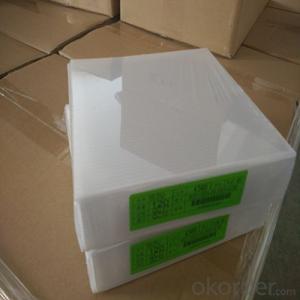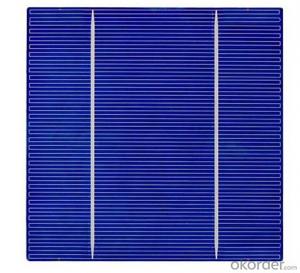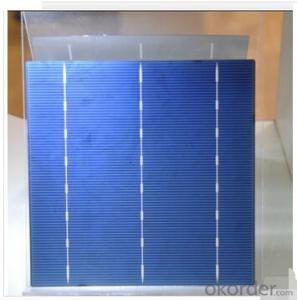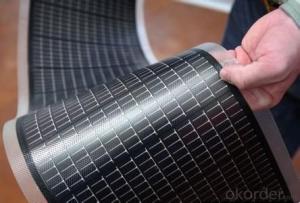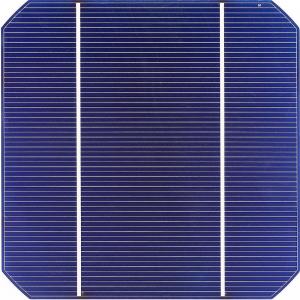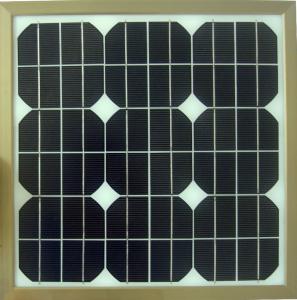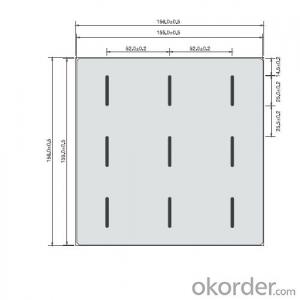Anti Reflective Coating PV Poly 2BB Solar Cells
- Loading Port:
- China Main Port
- Payment Terms:
- TT OR LC
- Min Order Qty:
- -
- Supply Capability:
- -
OKorder Service Pledge
OKorder Financial Service
You Might Also Like
THE CHARACTERISTIC OF 156P POLY-SILICON SOLAR CELLS
1.Format 156mm×156mm±0.5mm,Thickness 210μm±30μm.
2.High efficiency in photovoltaic conversion 16.3%~17.93%;
3.Low inverse current, high shunt resistance and high dependability.
4.Front(-): covered by dark blue silicon nitride anti-reflecting coating(silicon nitride) with bus bars(silver), 2/3/5 bud bars(silver).
5.Back(+): wide soldering pads(silver), back surface field(aluminum),high quality paste for the BSF and the electrode ensure higher tension and improve soldering easiness.
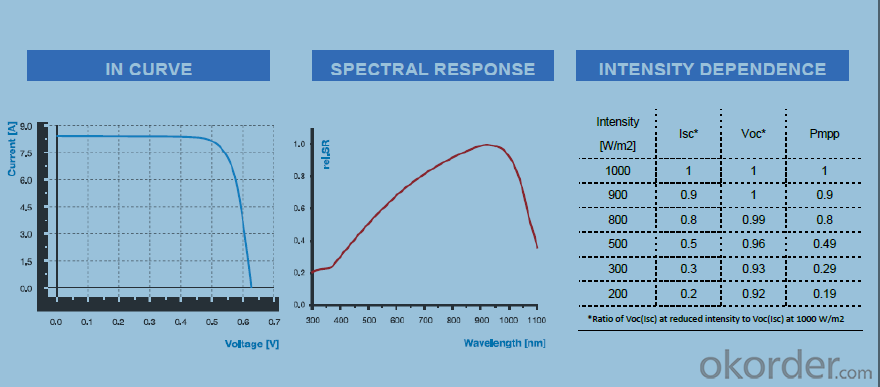
- Q: What is the impact of wind on solar cell efficiency?
- The impact of wind on solar cell efficiency is generally minimal. While wind can cause slight vibrations or movements in solar panels, it does not significantly affect the overall efficiency of the cells. The main factors that influence solar cell efficiency are the angle and orientation of the panels towards the sun, as well as the amount of sunlight received.
- Q: What is a polymer solar cell and how does it work?
- Polymer cells are actually a type of thin film solar cell,
- Q: Can solar cells be used for powering space missions?
- Yes, solar cells can be used to power space missions. Solar cells, also known as photovoltaic cells, convert sunlight directly into electricity. They have been widely deployed in space missions to provide power for satellites, space probes, and even space stations like the International Space Station (ISS). Solar cells are a reliable and efficient source of renewable energy in space, as they can generate electricity even in the absence of an atmosphere.
- Q: What is the impact of solar cells on wildlife?
- Solar cells have a minimal impact on wildlife as they do not produce any direct pollution or emissions that could harm animals. However, the installation of solar farms can disrupt natural habitats and affect local wildlife by altering the landscape and reducing available space for vegetation and animal species. Implementing proper planning and wildlife-friendly measures during the construction and operation of solar farms can help mitigate these potential impacts and create a more harmonious coexistence with wildlife.
- Q: Can solar cells be used to power water treatment plants?
- Yes, solar cells can be used to power water treatment plants. Solar energy can be harnessed to generate electricity, which can then be used to power the various processes involved in water treatment, such as pumping, filtration, and disinfection. Solar-powered water treatment plants are an environmentally friendly and sustainable solution, especially in remote areas where access to grid electricity may be limited.
- Q: Can solar cells be used for powering navigation buoys?
- Yes, solar cells can be used for powering navigation buoys. Solar cells are a reliable and sustainable source of energy that can be used to power various devices, including navigation buoys. They can harness sunlight and convert it into electricity, providing a continuous power supply for the buoys' operations. This eliminates the need for traditional fuel-based generators or batteries, making solar cells a cost-effective and environmentally-friendly option for powering navigation buoys.
- Q: Can solar cells be used to power refrigeration systems?
- Yes, solar cells can be used to power refrigeration systems. Solar cells convert sunlight into electricity, which can then be used to power various appliances, including refrigeration systems. This is particularly useful in off-grid or remote areas where access to conventional power sources may be limited.
- Q: How do solar cells affect property value?
- Solar cells can significantly increase the value of a property. The presence of solar panels not only offers potential savings on energy bills but also demonstrates the property's commitment to sustainability. Studies have shown that homes with solar panels sell faster and at higher prices compared to similar properties without solar installations. Additionally, solar panels can provide a reliable source of income through net metering or feed-in tariffs, further enhancing the property's value.
- Q: Can solar cells be used in urban areas?
- Yes, solar cells can be used in urban areas. In fact, they are increasingly being utilized in cities to harness solar energy and reduce dependence on traditional power sources. Solar cells can be installed on rooftops, facades, and other available spaces, enabling urban areas to generate clean, renewable energy locally.
- Q: Can solar cells be used underwater?
- No, solar cells cannot be used underwater as they rely on sunlight to generate electricity.
Send your message to us
Anti Reflective Coating PV Poly 2BB Solar Cells
- Loading Port:
- China Main Port
- Payment Terms:
- TT OR LC
- Min Order Qty:
- -
- Supply Capability:
- -
OKorder Service Pledge
OKorder Financial Service
Similar products
Hot products
Hot Searches
Related keywords



